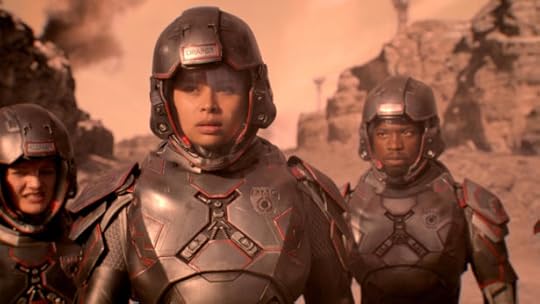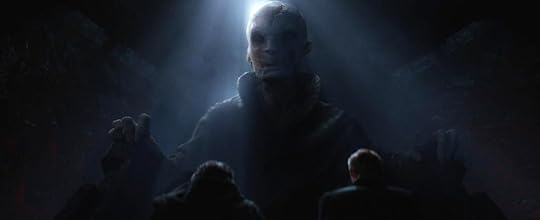Chris Hardwick's Blog, page 2149
March 3, 2017
Mondo Unveils Rad New LOGAN-Inspired Wolverine Pins
Hey, you! On the internet! Have you noticed that enamel pins are all the rage these days? They’re kinda like the flare that TGI Fridays employees used to have to wear, except it’s super classy and fashionable — and when it comes to pins inspired by your favorite ‘80s and ‘90s pop culture, nobody makes ‘em quite like Mondo.
In honor of Hugh Jackman’s final ride in Logan, Mondo has announced a new line of Wolverine pins designed by Tom Whalen and inspired by the Marvel Head Logos you’d see on classic comic book covers. Trust us, you’re gonna wanna buy a denim jacket just to affix these beauties on, because they’re completely perfect.
First up we’ve got the man himself, Wolverine, in his iconic yellow and blue costume:
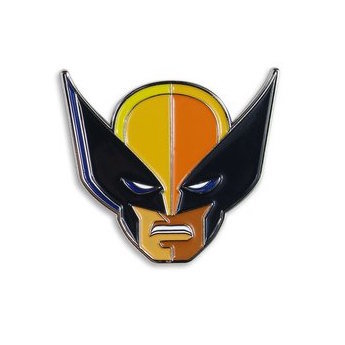
Then we’ve got Professor X wearing his Cerebro helmet:
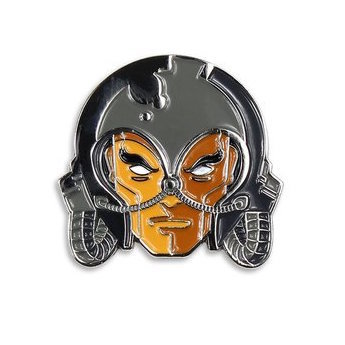
Speaking of helmets! There’s also this Weapon X pin, inspired by the doodad Wolverine wore in his head in issues #72-84 of Marvel Comics Presents:
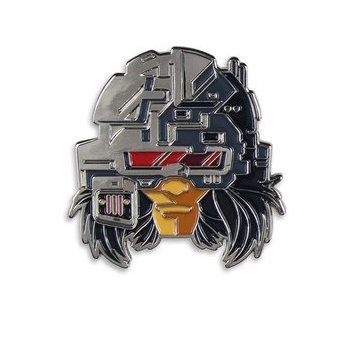
And finally, it’s everybody’s favorite clone daughter (who looks way cooler in Wolverine’s suit, if you ask me), X-23.
Each pin is about 1.25 inches tall and retails for $10 separately, but if you can’t choose and want to expand your pin collection all at once, you can get the whole set for $35.
Go head to the Mondo Tees website to pre-order your favorites, and make sure you check out the rest of their pin line! They’ve got an extremely cool Jubilee pin that I’ve been dying to get my hands on.
Which of these pins would you be most proud to rock on your lapel? Let us know in the comments below!
Cosplay Friday #201 – MASS EFFECT, DESTINY, and More by Nebulaluben
A Twi’lek, a military commander, and a sorceress walked into the same place. It’s not a joke with a bad punch line, it’s just another week in Cosplay Friday. The focus of this week’s gallery is Laura, a.k.a. Nebulaluben. The Spain-based cosplayer focuses much of her making efforts on ensembles inspired by her favorite video games and Star Wars. I’d say it’s a winning combination. Her skills run the gamut. She can sew, style wigs, and paint and weather material. Her armor crafting abilities are on point in this FemShep costume:
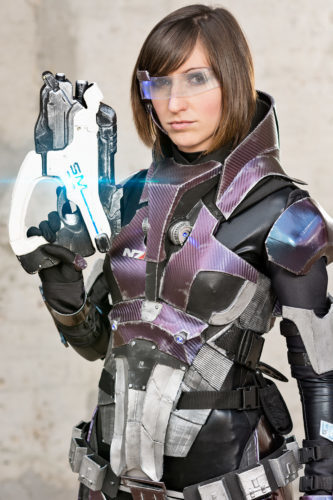
Commander Shepard (Mass Effect 3) | Photo by Jesús Clares
If you stop by these parts regularly, then you know the drill: there are more costumes in the gallery below. Get to scrolling! You’ll see two Star Wars ensembles, a Destiny Hunter, and Morrigan from Dragon Age. When you’re ready to view Nebulaluben’s complete portfolio, go give her a follow on Instagram and/or Facebook.
Do you cosplay or take photographs of cosplayers? Then I want to see your work so we can talk about highlighting your creations in a future Cosplay Friday gallery. If you’re interested, please get in touch with me at alratcliffe@yahoo.com and send hi-res photos you’d like me to feature. Be sure to provide credits for the cosplayers or photographers for each image because giving credit is good manners–bonus points if you include links to relevant Facebook pages or websites. Though I wish I knew all the geek franchises, I don’t, so please let me know who or what is being cosplayed.
Images: Courtesy of Nebulaluben, featured image by Jesús Clares
LOGAN Producers Discuss How the X-MEN Franchise is Taking New Risks
Even if you’ve been an X-Men movie fan your entire life, trust me: you are not prepared to see Professor X and Wolverine throw a bunch of F-bombs at each other when Logan hits theaters this weekend. It’s truly unlike any superhero movie that Fox has put out before, and fans will almost totally dig (much like we did) the complexity and drama — and all the kick-ass stunts — inherent in Hugh Jackman’s final curtain call as the beloved character.
While speaking to Nerdist during a press event, producers Simon Kinberg and Hutch Parker revealed that they didn’t get very much backlash from the studio for daring to take such a strong risk with their latest Wolverine film. In fact, it was encouraged.
“I think there were people around the production who probably felt a level of anxiety, but this has been a desire of ours for a while, even honestly going back to my time at the studio, to push the character to be a little bit more gritty, a little bit more grounded, and a little bit edgier.” said Parker. Even the current studio executives were on board: “there was a very clear belief that Wolverine needed to evolve to this place, that it was the right next step in the evolution of telling his story.”
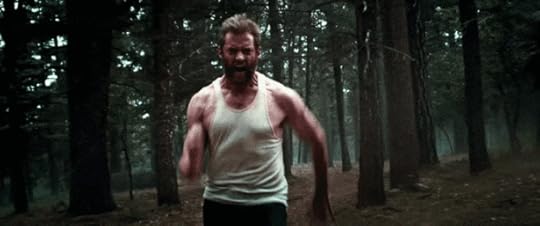
Logan is singularly unique among superhero stories, true, but it’s also the latest film to follow a recent trend within the X-Men franchise of mature, character-driven projects; before this there was Deadpool (although “mature” may depend on your definition of the term, there) and, more recently, FX’s Legion series, both of which also premiered to intense critical acclaim. According to Kinberg, this shift in perspectives was deliberate, and came mostly as a result of allowing these individual filmmakers to approach their work on their own terms.
“Who we got for each of these projects came from a desire to push the envelope on what these kinds of movies can do,” Kinberg said. “We felt not just a responsibility but an opportunity to differentiate what Fox is doing with their Marvel properties to what everyone else is doing with their comic book films, and that means, for us, making them more character driven, more dramatic, edgier, and each of them are radical and distinct from each other and from other movies that are out there.“
“So as much as Deadpool is R-rated and Logan is R-rated, they couldn’t be more different from each other,” he continued. “Deadpool is a fun, completely wacky bats**t comedy, and Logan is incredibly grounded, emotional, dramatic film. What they have in common is they both take a lot of chances and risks, and I think that with audiences these days — given not just all the comic book material they have out there but just all the different things that can entertain them — you have to be able to stand out. That’s what we try to do with all these films, and we’ve chosen filmmakers who have distinct, unique visions.“
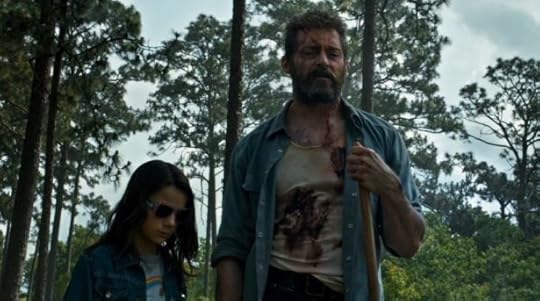
Although Hugh Jackman’s time as Wolverine might be ending, there are plenty of new X-Men tales coming up — like the aptly named New Mutants movie, which the studio is hoping to cast and begin shooting “quite shortly” for a 2018 release. Director Josh Boone grew up reading New Mutants comics as a kid, Kinberg said, and “he had a very clear sense of what he wanted to do with them.”
Then there’s also the X-Force movie, which has been the subject of many talks between Ryan Reynolds, Kinberg, and studio executives, and which will most likely feature characters from the upcoming Deadpool sequel (Cable, of course, being among them). “It’s a movie that we’re really interested in and is on the horizon for us,” Kinberg said.
And that rumored Dark Phoenix-themed movie that Kinberg is reportedly working on? Neither he nor Parker would confirm its existence, naturally, but they did say that they’ve been kicking around ideas for the next big X-Men title since they started post-production on Apocalypse — and they’ve both certainly thought about what it would take to bring Jean Grey’s alter ego to life.
“I think the challenge of Dark Phoenix is to be true to the comic. It’s one of the most popular sagas in the history of the X-Men or any comic book,” Kinberg noted. “But also, to find a way to ground it so it’s not too intergalactic. One of the things that Bryan Singer did from the beginning of the franchise, and I think that you see us doing now and continuing and maybe even deepening, is making these movies as human and grounded and emotional and relatable as possible.”
“it’s a big story,” Parker agreed. “it’s got large complex elements and ideas in it, and offers such a rich well to draw from that I think it’d be pretty exciting to tackle that one.”
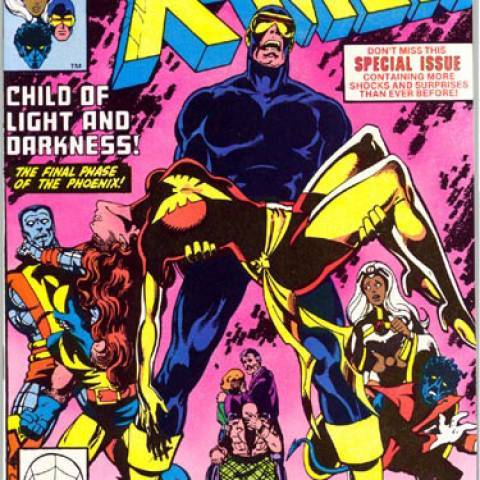
Going forward, the pair of producers are committed to making sure each film in the franchise is as distinct and radical from one another as possible. But there is one loosely unifying theme: each movie, in its own particular way, will deal with what it means to be an outsider.
“I think that’s why the X-Men comics have been as successful as they are, which is that they’re about outsiders,” Kinberg said. “Even though you’re a superhero, your superpower makes you different, and I guess that feeds into these movies being different from each other as well.“
“We’re at a really exciting time for these movies because they’ve evolved far past the early days of comic book movies, into being movies that can kind of tackle any subject, any tone,” Parker added. “And not just courtesy of the X-Men movies, obviously, Marvel’s done a great job of it, too. It feels like the landscape is opening up in a really exciting way for all of us.”
Yes sir, it certainly is awesome to be a fan of superhero stories and of the X-Men — although personally (and bear in mind, this is coming from someone who owns an original cel of Lilandra from X-Men: The Animated Series) I wouldn’t mind a little bit of intergalactic nonsense in whatever comes next. What about you? Let us know in the comments what you’d like to see!
Images: 20th Century Fox, Marvel Comics
Is X-23 actually deadlier than Wolverine?
You Probably Missed the Best Bit of Science in This Week’s THE EXPANSE
“In space, no one can hear you scream,” is probably the most iconic movie tagline of the all, and it has the benefit of being true. What we perceive as a sound (or scream) is a pressure wave moving through a medium like air. Space is a vacuum, and so without air, no one will hear you, even if you were yelling in their face. This week’s episode of The Expanse once again showed that it takes science seriously by thinking up a clever way to get around this problem.
At one point in “Paradigm Shift,” (don’t worry, no spoilers here) two characters are in the vacuum of space when their communications drop out at a critical moment. Thinking quickly, the two characters touch helmets and yell orders at each other. A lesser show would probably say this was an attempt to read lips, and that the audience was afforded the luxury of hearing that attempt aloud. The Expanse is smarter than that.
I had a hunch that this helmet-to-helmet technique may be more than what it seemed, so last night I spoke with show runner Naren Shankar at an event hosted by the Science and Entertainment Exchange in Los Angeles. Shankar confirmed that the real reason the characters touched helmets was in order to translate the vibrations from their voices through the helmet and into the air inside the other helmet. It’s the same principle that makes string and can telephones work, and it’s a brilliant work-around for theoretical rock-hoppers.
Touching helmets so that in space someone can hear you scream is a minor detail, but most sci-fi shows discard this science-minded minutia for the sake of time, money, or narrative. Even though The Expanse doesn’t have to include thoughtful moments like this, it is clearly committed to doing so. “The nice thing about The Expanse is that we get to tackle ideas that most fiction has passed over,” Shankar said. “[The Expanse] is an opportunity to make life in space a character.”
Images: Syfy
DARIA’s Creators Celebrate the Show’s 12 Best Episodes
It was love at first smirk. Twenty years ago today, Daria hit MTV, sending shockwaves of sarcasm and snark across teen culture. With incendiary wit and a razor-sharp insight, this side-eying high schooler proved an inspiration to a generation that had the world at their feet, but suspected that was a trap. With idealism edged by cynicism, Daria became a beacon of hope for teens frustrated with student life rife with popularity contests, routine embarrassments, and choking vanity. She was too cool for such high school shenanigans, and cut through its hypocrisies using her wits as a weapon, urging fans to follow her example.
To celebrate Daria‘s twentieth anniversary, Nerdist reached out to the show’s co-creators, Susie Lewis and Glenn Eichler, to discuss its evolution, legacy, and its quintessential episodes. Exploring common teen experiences like insecurity, rebellion, sibling rivalry, crushes, finding community, and feeling like an outsider, these episodes distill the very essence of Daria.

“The Invitation” Season 1, episode 2
After moving from Beavis and Butt-Head‘s hometown of Highland, the spinoff heroine settled into Lawndale pretty quickly. By Daria‘s second episode, she’d already scored an invite to the Brittany’s house party, full of popular kids like the lunkheaded Quarterback Kevin, overachiever Jodie, the Fashion Club, and even the sex-obsessed Upchuck. Viewers got an efficient tour through this high school’s hierarchy, and saw how Daria was a different from a lot of other teen shows. “I wasn’t thinking about this at the time,”Eichler says, “But it sets up that Daria isn’t being absolutely rejected from this world of the popular kids the way they do on most shows about high school. Instead it’s a case of benign neglect.”
“The idea is that if you hang in there, things will improve.” – Glenn Eichler
And this neglect suits Daria fine. Surrounded by shallow teens fawning and flirting, she and Jane stood out early on, defined by their acerbic humor and preference for pranking the residents of Brittany’s gated community, instead of getting down with the Soul Train. (Beep beep.) To that end, Eichler tells fans to look out for how director “Karen Disher animated Sandi so she was doing a Snoopy dance.” It’s the move all the cool kids are doing.
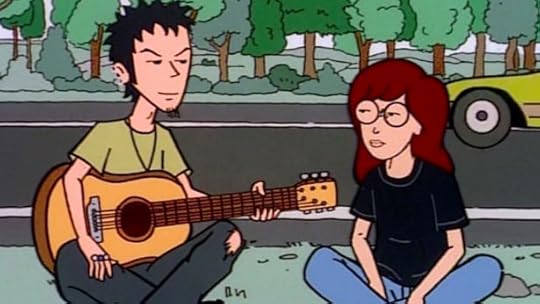
“The Road Worrier” Season 1, episode 11
The first to focus on Daria’s fumbling flirtations with Jane’s brother Trent, this ep threw the crew into a busted van on the way to the Alterna-Palooza music festival. But what seemed like a chance to get cozy with her crush soon turns into a nightmarish string of embarrassments, from a bulbous bee sting to breaking her signature glasses and sitting on a sloppy sandwich. Still, it allowed both Daria and audiences to get closer to the beautiful but not-so-bright Trent Lane.
When it came to creating Daria’s first crush, Lewis pulled from her past. “I grew up loving music and loving the guys that were in the band,” she recalled. “A lot of them were really hot on stage, but when you talked to them, it was completely different. And it was such a bummer.”

Eichler noted the sweet but oblivious Jordan Catalano from My So-Called Life was an inspiration point. “He was this real dreamboat, right?” The co-creator explains, “But whenever he talked, he was kind of a moron. And I liked the idea that Trent was this really really hot guy, but–not a moron–but kind of flakey.”
Named after Nine Inch Nails’ Trent Reznor and modeled after smoldering guitarist Dave Navarro, Trent became an aspiring rock star whose laziness outsized his ambitions for his band, named Mystik Spiral (for now). “Then we decided he should be somebody who is in her life whether she wants him to be or not,” Lewis shares, “So the obvious connection there was to have him be Jane’s brother. Then the other twist is he’s not an asshole. He’s actually a really nice guy. And he’s really nice to her. And even if he says things that aren’t really bright, he’s still deep in a lot of ways.”
“Whenever they’re together, they have their moments,” Lewis says of the relationship, pointing to the end of this formative episode, where Trent bonds with Daria on the side of the road in a treasured private moment. “That was a real great moment. I love that she’s so shy and insecure around him. And he’s just nice.” He doesn’t mention the bee-sting, the taped up glasses, the sandwich goo on the butt of her jeans. “He doesn’t add to her anxiety. It’s brought on by her.” Simply put, you couldn’t ask for a cooler, kinder crush than Trent Lane. And like Daria, Daria fans fell hard from the start.
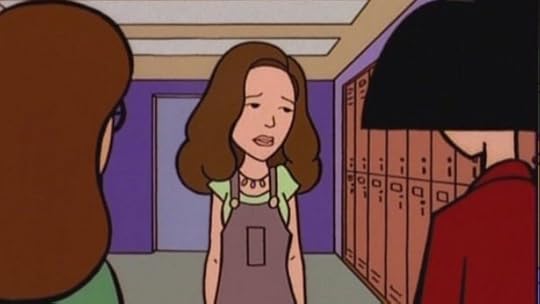
“The Misery Chick” Season 1, episode 13
When arrogant alumni Tommy Sherman abruptly bites it on the football field, Lawndale High students are forced to face mortality. So they turn, one by one to “the misery chick,” Daria. It’s a role that’s overwhelming and a bit insulting. In one of the series’ defining moments, the typically unflappable heroine explodes with a frank realization: “I’m not miserable. I’m just not like them.” Having written this ep, Eichler connects deeply to Daria’s irritation here.
“If you don’t smile constantly, people think there’s something wrong with you,” He declares. “And if something bad happens to a person you don’t know/care about, and you don’t act emotionally stricken, people think there’s something wrong with you. So to me, the point of that episode was there’s no reason to criticize her for the way she is. In fact, it’s perfectly valid, and in fact more honest than a lot of people.” Being honest in the face of peer pressure went on to become Daria’s brand, for better and sometimes worse.
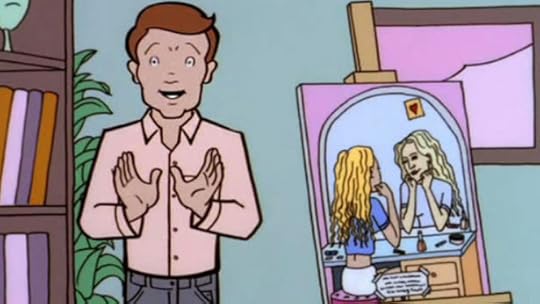
“Arts ‘N’ Crass” Season 2, episode 1
When a school-wide contest asks for poster submissions that represent “Student Life At the Dawn of the New Millennium,” Daria and Jane team up, pairing Jane’s painting of a pretty girl with Dara’s poem about how the social pressures to look pretty push its subject to bulimia:
“She knows she’s a winner / She couldn’t be thinner / now she goes in the bathroom / and vomits up dinner”
When Principal Li goes against their wishes and changes the poem to a more “upbeat” message–that just so happens to fly in the face of its intended purpose–the defiant duo concocts a Brittany-inspired plan to reclaim their controversial collaboration.
“The good guys win in the end, if you call destroying your own artwork winning.” – Eichler
Over the course of the show, Daria would stand up to her principal’s mercenary style of administration on numerous occasions, from chasing off modeling scouts (“This Year’s Model”), to dropping the mic on radio shock jocks (“Jake of Hearts”), and souring the school’s deal with a cola sponsorship (“Fizz Ed”). But of all these episodes, Eichler called “Arts ‘N’ Crass” a personal favorite, sharing, “I just think that one takes a realistic look at censorship, and offers a pretty good example of adult hypocrisy and authoritarianism, e.g. telling kids to express themselves and then freaking out when they do. Plus the good guys win in the end, if you call destroying your own work of art ‘winning’.”
Another part that stands out to Eichler is how “Helen rides in to the rescue,” using her gravitas and legal know-how to defend her daughter against Ms. Li’s threatened retributions. High-strung Helen and deadpan Daria rarely saw eye-to-eye on the series. But in moments like these, teens at home got a welcomed reminder that their parents are people too.
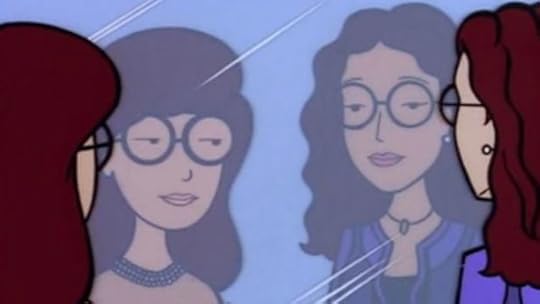
“I Don’t” Season 2, episode 4
Whisking the Morgendoffer clan off to a cousin’s country club wedding, this romp-com forced Daria into a criminally ill-fitting bridesmaids dress, saw Quinn getting hit on by an odious minister, and introduced “cool” Aunt Amy, a role model kicking back in Daria’s own family tree.
“We wanted to show that just because the people in Daria’s world think she’s weird,” Eichler explains, “doesn’t mean she is weird.” Aunt Amy was a sign of hope and a road map to adulthood for the oft-frustrated misfit. As to how the character was developed, Eichler essentially reverse-engineered from the personality of Daria’s hard-nosed mom.
“Just because the people in Daria’s world think she’s weird doesn’t mean she is weird.” – Eichler
He mused, “Helen is so uptight and so concerned with making sure everything is done correctly that I definitely could see her as the second in line where the first was a hippie, where the first had no sense of responsibility.” From this, the writers created the mother-of-the-bride, Aunt Rita, subject of a decades’ long sibling rivalry that would explode in an forgettable reception, complete with much brawling and bottle-swigging.
“So if Helen’s going to be the uptight one,” Eichler reasoned, “and her older sister is going to be irresponsible, I could see Amy not having to be part of that cycle. She becomes whoever she’s going to be. And also, I don’t think it’s particularly outrageous that Helen’s sister might have some of the same personality traits as Helen’s daughter.” When the two share a smile, wearing similar glasses, viewers got to share in that recognition.
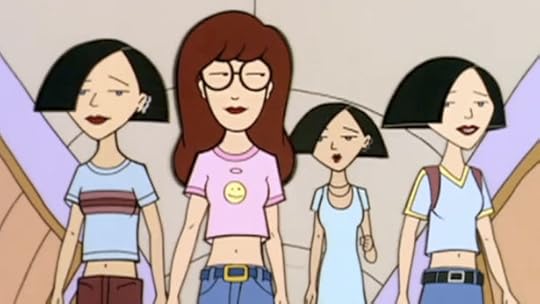
“Monster” Season 2, episode 6
Sibling rivalry between Daria and Quinn is front and center in episodes like “Speedtrapped,” where the pair roadtrip and meet a conniving cowboy, and “Quinn the Brain,” where the bubbly redhead won sweeping praise for one half-decent essay. (“There are different standards for cute people,” Jane quipped.) But the most defining of these centered on “The Depths of Shallowness,” a video assignment Daria made about the “hollow self-centered ego-maniac” that is her younger sister.
“I kind of see Quinn and Daria as they get older, just being good friends and sisters.” – Susie Lewis
As Quinn devotes herself to being pretty, popular, and pursued by boys, her intellectual older sister hoped to expose the vapidness of that way of life. And Daria hits exposé pay dirt when the preening teen queen has a meltdown on camera. (“My pores are cute! My pores are tiny!“) But after an odd but earnest confession from Quinn, Daria changes the cut to save her sister from social ruin. Naturally, it makes the Fashion Clubber even more popular.
Asked about “Monster,” Lewis laughed warmly, and quickly comes to Quinn’s defense. “I love Quinn. I always identified with her as well,” She explains. “I love fashion and I care about make-up, but I’m also very much like Daria and Jane, where I care about art and being introspective, and being deep and all that stuff. Quinn wasn’t dumb…she was just an average teenage girl. She loved what she was into.” Lewis went on to speculate about how Quinn would have continue to grow after the season wrapped, saying, “I kind of see her and Daria as they get older, just being good friends and sisters. And kind of coming to respect each other’s lives. And they’re different, but they’re sisters, so they’re bonded. If I had a sister, that’s how I’d want it to be.”
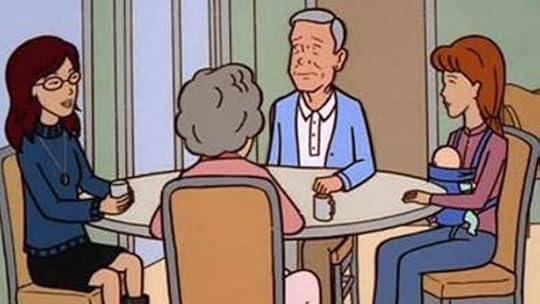
“Write Where It Hurts” Season 2, episode 13
Fans actually got a peak into what such a future might look like in the playful episode where Mr. O’Neill challenges Daria to compose a story based on people she knows. There are some fun nods to Jane Austen’s novels and a parody of The Graduate that has Jane running off with dunderheaded Kevin. But the last story is the one that really stuck with fans.

In it, Daria imagines where the Morgendorffers’ lives might be years down the road. Her parents, Helen and Jake, are calmer and content. Quinn has mellowed too, becoming a mother who channels the energy she once put into being popular into raising her rambunctious brood. And Daria pictures herself a happily married and successful writer, who is respected, loved, and understood by her family.
“What I was trying to do was give the character some light at the end of the tunnel,”Eichler says of writing the heartfelt episode. “And to teenage viewers, who were also having their own issues, I’m sure that they identified with that. That whole “It Gets Better” campaign (the anti-bullying campaign that reached out to LGBTQ youth) was essentially the same thing, only to a much more distressed portion of the population. The idea is that if you hang in there, things will improve. I think I was trying to show that would be true for her, and I think viewers said, ‘Oh, maybe that’s true for me.'”

“Depth Takes a Holiday” Season 3, episode 3
During the show’s third season, Daria‘s success inspired Eichler and Lewis to take bigger risk with their stories and format. It’s where they dove hard into camp and fantasy with a mirthful misadventure in which Daria helps anthropomorphized teen holidays, Valentine’s Day and Saint Patrick’s Day recover some truant peers (Christmas, Halloween, and Guy Fawkes Day), who’ve left Holiday Island High School in favor of joining Trent’s band, Mystik Spiral.
The break from the show’s established world and canon was roundly rejected by fans, earning”Depth Takes A Holiday” the dubious honor of being dubbed “the worst” of the series. But Eichler has a soft spot for its willful silliness. “It was so stupid in a good way,” he argued with a chuckle. “Where she meets Guy Fawkes Day? I mean come on, how often does that happen on TV?”

“Daria!” Season 3, episode 7
Conversely, when this season’s adventurousness spun Daria into a musical, fans were stunned but ultimately thrilled. “That’s my favorite episode,” Lewis gasps over the gleeful special that has all of Lawndale bursting into song as a massive storm threatens to blow the whole town away. Even Daria sang. Sort of.
“I knew right away that Daria didn’t have to sing. She could just speak through the words,” Lewis recalls. “But Tracy [Grandstaff, who voiced Daria] could actually carry a tune a little bit. As much as she spoke through it, it was fun. It was exactly how her personality should be singing. ”
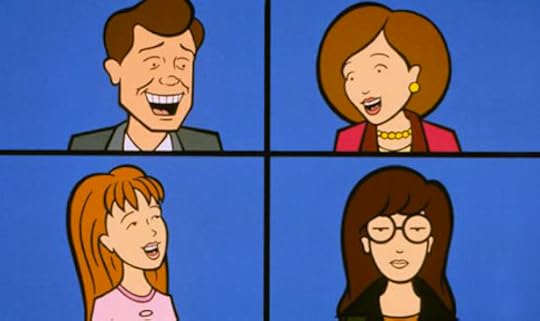
Around this time, series like The Simpsons, Xena: Warrior Princess, Northern Exposure, and Ally McBeal were all churning out special musical episodes. As they headed into Daria‘s third season, this trend inspired Lewis, who grew up taking family trips to Broadway. “I was just like, ‘We have to do a musical.’ And I remember Glenn just laughing and being like, ‘What?!’ And he was like, ‘What would happen?’ Well, I was like something dramatic has to happen for it to be a musical. So, let’s say it’s a storm.”
From there, Lewis tapped musicians close to the show–including Eichler who plays guitar–to write the lyrics and music. “And as far as the actors went, that was just pure luck,” she laughs, noting how most could actually sing. “And even when they didn’t know how to sing well in character, it was funny. If it made us laugh, it was just good to go!”
The playful lunacy of the ep threw some viewers for a loop. But over the years, this playful twist on Lawndale has become a campy fan favorite.
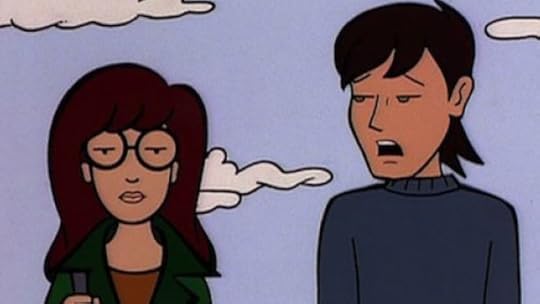
“Jane’s Addition” Season 3, episode 13
But the biggest risks hit in the season three finale. Jane got a boyfriend, and Daria got over her crush on Trent. When the girls have to put together a multi-media project for class, they depend on the lackadaisical Lane sibling to compose some original music. But as Jane gets distracted with her new beau Tom, Daria realizes Trent’s let her down. Moreover, even though she still likes Trent, the two would never work as a couple. A thinly-veiled conversation about the class project hit Daria/Trent shippers hard.
Trent: I guess it wasn’t such a great idea for us to get together…on this.
Daria: No. I guess there’s no way it could have worked out.
Trent: It’s too bad, Daria. I always kind of felt you understood the way I think.
Daria: I do, Trent. I do.
Lewis remembers closing this door on Daria and Trent being “very meaningful,” noting that in a way it marked Daria growing up and “facing reality a bit.” Despite Trent’s flakiness, “he tries to be thoughtful.” So even though Daria made dumb moves like biting her tongue or getting a belly button ring to impress him (“Pierce Me”), “she kind of redeems herself by being attracted to him throughout the whole relationship.”
“Sometimes things don’t work out, no matter how good he looks in a lime green t-shirt and goatee.” – Lewis
While it was a bittersweet goodbye, the Daria team managed one that respected each character, making neither the “bad guy.” It’s just sometimes things don’t work out, no matter how good he looks in a lime green t-shirt and goatee. “Yeah, isn’t that how it always is?” Lewis laments with a laugh.
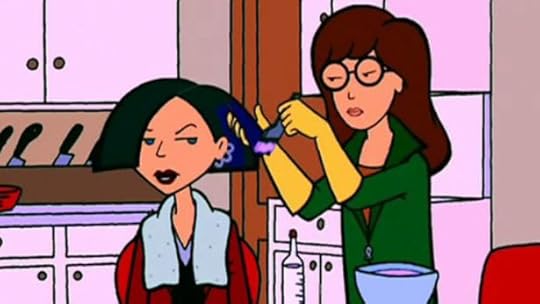
“Dye! Dye! My Darling” Season 4, episode 13
In season four’s finale, tensions over Tom came to a head when when Jane demanded Daria dye blonde streaks into her hair. The result was less “the lady or the tiger” and more grim, spurring further fighting between the two. Then Daria kissed Tom, throwing the future of her friendship into peril. For Eichler, crafting the arc of all this upheaval was a challenge and a joy.
“To this day there are still issues with that whole thing.” Eichler confesses. “My feeling was we’d gone a number of years; Daria hasn’t had a boyfriend and hasn’t had anything remotely romantic. She really hadn’t dated to any extent. I felt like maybe the fact that I don’t want to write about her having a romance isn’t enough justification for her not to have one. But I also felt like in a situation like that, someone that shy and non-social, the way she might be most likely to meet a boy would be if it were the boyfriend of a friend, and of course that would mean Jane’s. So that’s how that got constructed.”

While shaping the Tom arc that’d stretch through the rest of the series’ run was tricky, Eichler describes writing Daria and Jane’s big fight here as “a nice change.” He explains, “anytime the relationship between two characters changes, you get to write stuff you haven’t written before.”
The DIY dye job was basically Jane’s way of pushing a conversation she and Daria needed to have about Tom, but both were avoiding. “Jane was always more emotionally mature than Daria was,” Eichler remarks. “She certainly moved in and out of teenage society better than Daria did. But her view of the world was the same as Daria’s, but she took it with more good humor. And I think she enjoyed how funny Daria was about expressing that shared view.” This shared view is ultimately what would pull the smirking duo back together through the end of this episode, and the subsequent TV movie, Is It Fall Yet?, which served to bridge seasons four and five.
“I knew they wouldn’t be permanently estranged,” Eichler says, “because they were too close. They needed each other too much, and they complimented each other too much.” And as the series drew to a close, Daria would need her best friend more than ever.
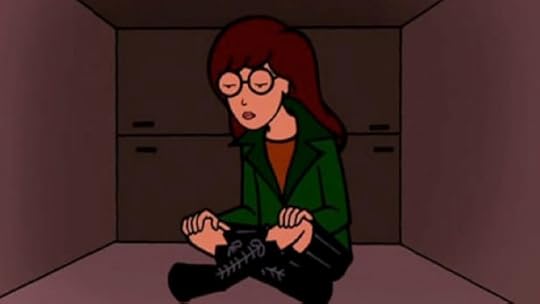
“Boxing Daria” Season 5, episode 13
In a stunningly snark-free arc, an abandoned refrigerator box reminds Daria of a frightening formative moment from her childhood, one where her parents nearly split up, and she and Quinn were all too aware of why.
Reflecting on how her rebellions and failures to fit in have affected her parents, Daria sinks into despair, and into the box in the backyard. It’s a frank yet tender heart-to-heart with her most trusted friend Jane that urges her to have a tough but tremendous parent-child talk. Ultimately, this discussion pulls her back out, thanks to some insightful words from her mom and dad:
Jake: It was part of the deal. It was the other side to you being so smart and perceptive.
Daria: What do you mean?
Helen: Daria, you can’t have a child with your kind of intelligence and expect her to fit in easily with other kids. We weren’t happy to be called into school because we knew it meant you weren’t happy.

“It was just about how do people end up being the way they are,” Eichler explains. “It’s nature and it’s nurture but there are also defining episodes of their lives. And you know, I was obviously very fond of the character and I wanted to approach her with the most compassion that I could. And I thought that’s what happened there.”
While the series officially ended with the playful movie Is It College Yet? the season five finale is what many fans–and Eichler–consider the true conclusion to Daria. “It was good way to button up the series. Like the movie ended the series, but so did that episode.”
“I was very fond of the character, and I wanted to approach her with the most compassion that I could.” – Eichler
“I think “Boxing Daria” was a more appropriate end to the series.” He considered, “I think Is It College Yet? was a more fitting look to the future, and I think those are kind of different things.”
What was your favorite Daria episode? Let us know in the comments and on Twitter.
Images: MTV
TIME AFTER TIME Doesn’t Travel to Quite the Right Place (Review)
Warning: Minor spoilers follow for the Time After Time premiere.
ABC is throwing their hat into the time travel drama ring with the premiere of Time After Time… or are they? Press material states this is not a time travel show but “a series that looks at the world of today through the eyes of yesterday.” H.G. Wells and his time machine are at the show’s heart, however, so there is a measure of time hopping. Series executive producer Kevin Williamson told a group of reporters time travel happens three to four times in season one, in which the story unfolds over a period of about three weeks. So, there’s time travel but the show doesn’t center on it. Make sense?
It doesn’t, and the hesitancy to fully embrace the time travel aspect of it all may harm the series. But let’s stick to discussing the two-hour premiere rather than speculating. As you might guess from the name, the show is an adaptation of the 1979 film Time After Time featuring H.G. Wells going forward through time to find his colleague Dr. John Stevenson, a.k.a. Jack the Ripper. The show is directly inspired by the movie starring Malcolm McDowell and David Warner. Williamson’s a fan and said, “We do a very faithful adaptation in the pilot. There’s no question about it. I love that movie. Then, we pulled in the thread of where the series is going to go–which you see in episode two. It starts to evolve and expand beyond the premise of the movie.”
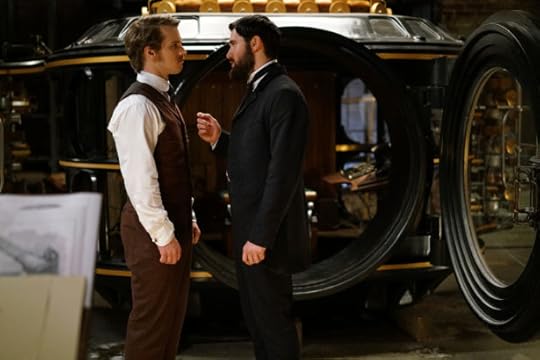
Freddie Stroma and Josh Bowman step in as Wells and Stevenson, respectively, and they have big shoes to fill. Stroma brings an optimistic, earnest character to the screen, while Bowman layers on charm mixed with a healthy dose of terror and mischievous as Jack. The potential for interesting scenes between the two characters is there, but the more fascinating part in the premiere is how they react to modern day New York after putting boots on the ground from the nineteenth century.
Wells expects to find his utopia, a world without violence where advances in technology and science have had a profound effect. Stevenson is the glass half empty who predicts the future is just as bad if not worse than their present day. Guess who’s right? Because of Stevenson’s attitude, he’s more accepting of the noise around him. It was a deliberate move. Bowman explained, “We wanted to make him somewhat of a chameleon, someone hard to catch. We want Wells to jump through more hoops than John would have to. Wells expects a utopia, and when my character gets into the world, he jumps in headfirst and drinks it up and finds out how to use these different instruments and gadgets to give him an edge.”
He needs the edge because Wells is trying to get Stevenson back to the past so he can be apprehended for his crimes. The cat and mouse game is what drives the plot, but other factors come into play. There’s Wells’ family connection, which is incredibly convenient but not unbelievable, and also a love story. Upon arriving in New York, Wells almost immediately meets Jane Walker (Genesis Rodriguez). She’s a contradiction. The character talks about being independent and not needing a love interest and Rodriguez pointed out how she gets to be the hero and save Wells “time after time,” but it doesn’t jibe with what we see.
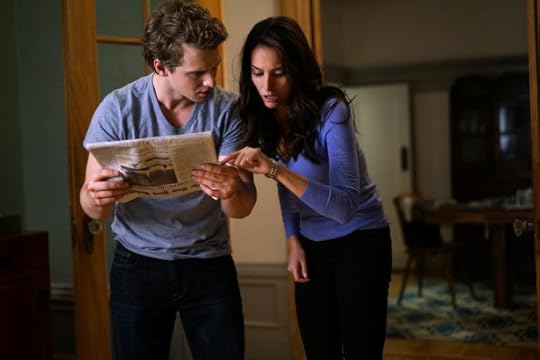
Jane shows kindness to Wells, but the helping hand becomes familiar too quickly–and I’m not talking about a physical relationship. Women can be both independent and romantic, I’m not saying otherwise. The aspect about their relationship that puts me off is how fast they seem to be comfortable with each other. Even if there’s a “connection,” I would have liked a slower burn for the sake of making it feel more realistic. And from a practical aspect, Jane doesn’t seem like the sort who would allow a total stranger into her apartment, much less let him sleep on her couch.
That said, Rodriguez does bring a fun air to Jane. Aside from the Wells infatuation, she’s wholly likable with her pragmatic qualities and open mind. For example, she thankfully gets over the whole time travel disbelief within a few scenes.
Though it may not be tagged as a time travel show, it faces the tropes other period roaming series do–things like comments about not altering the timeline or ripping the fabric of time, convincing others time travel is real, and the whole man-out-of-time bit. Time After Time hits many slots on the Bingo card. The requisite jokes about technology and subjects like Tinder are amusing if not terribly original.
All in all, Time After Time has promising ideas and some sold chemistry between various characters, but it’s only scraping the surface. The upshot is the foundation is stable and the cast is solid. They can overcome some stumbles if the overreaching arc is strong enough. Will it be? Time will tell.

Time After Time debuts with a two-hour premiere on Sunday, March 5, at 9:00p.m. ET/PT on ABC. If you can guess how many times I used the word time in this article, I will consider giving you a prize.
Images: ABC
How the First Order Will Be Even More Deadly in STAR WARS: THE LAST JEDI!
Just over a year ago, Star Wars: The Force Awakens kicked off the new trilogy and a new era for the franchise by introducing an exciting lineup of new characters as well as many of our returning favorites. The film also borrowed heavily from the very first Star Wars movie, but the upcoming sequel, Star Wars: The Last Jedi, has the potential to carve out some unexplored territory in the aftermath of The Force Awakens. Today’s Nerdist News is exploring a new rumor has emerged about the state of the galaxy after the destruction of Starkiller Base.
Before we go any further, there are potentially massive spoilers ahead for The Last Jedi. Don’t say that you weren’t warned!
Join guest host, and honorary Dark Lord of the Sith, Tiffany Smith, as she examines the secret data that so many Bothans died to bring you. The latest rumors come from Making Star Wars, a site that has a pretty good track record. Since The Last Jedi is literally starting a few seconds after The Force Awakens, it means that we’re going to see the fallout from the First Order’s actions in that story. Remember, no one took the First Order seriously…until they blew up the capitol planet of the New Republic. Now, it appears that Snoke’s burgeoning empire still has momentum on its side, as he and Leia scramble to make new alliances.
While Lucasfilm has downplayed suggestions that The Force Awakens will crib from The Empire Strikes Back, it’s hard not to see several parallels between the two. General Leia’s mission may bring her to a planet that reminds fans of Cloud City, while a good deal of the story will also deal with Rey’s tutelage under Jedi Master Luke Skywalker. Eventually, the two stories may converge as they did in Empire. But we’re not complaining! If Lucasfilm has to look to the past for inspiration, it might as well be the best damn Star Wars film of all time.
What do you think about the latest Star Wars rumors? Let us know in the comment section below!
Piñatas Based on Horror Icons Are Frightfully Fun
One of the joys of growing up Hispanic, or in parts of the country with large Hispanic populations, is that at one point or another, you got invited to a birthday party as kid that involved a piñata grand finale. Can anything be more enjoyable to the average eight-year-old than the ability to swing a baseball bat, beat up Darth Vader or Superman, and then get an awesome candy reward as a result?
Of course, most of the piñatas available to us as kids at these birthday parties were more family friendly fare, so we never got to swing that bat at the pop culture characters that really freaked us out as children and gave us all nightmares.
But thanks to the folks at Bloody Disgusting, we’ve learned about the amazing custom pinatas of Etsy seller , who have created a series of piñatas based on the icons of classic horror films like Ash from the Evil Dead, little possessed Regan from The Exorcist, Pennywise the Clown from Stephen King, plus slasher royalty like Chucky, Jason Voorhees, Michael Myers, Freddy Krueger, and Leatherface.
Characters from the films of Tim Burton, like Edward Scissorhands and Beetlejuice, are also represented here, and even poor Glenn from The Walking Dead get his own piñata, which is rather fitting, considering how he met his end. And before you ask, yes, the Glenn piñata comes with his own version of Lucille, Negan’s beloved baseball bat that did him in. (Too soon?)
You can see the entire selection of horror icon pinatas in our gallery below, and for these and other pop culture inspired creations, be sure to go to Etsy page.
What do you think of the cool horror piñatas? Are you like me, and hoping Pinhead and Candyman join up? I mean, who would be more appropriate than Candyman for a piñata, right? Let us know your thoughts down below in the comments.
Images: HangMeOfficial
More horror? Okay!
GAME OF THRONES Re-Throned: “First of His Name” (S4, E5)
Winter is coming, but not soon enough. So to help pass the time until season seven of Game of Thrones, we’re doing a weekly re-watch of the series, episode-by-episode, with the knowledge of what’s to come and—therefore—more information about the unrevealed rich history of events that took place long before the story began. Be warned, though: that means this series is full of spoilers for every season, even beyond the episode itself. So if you haven’t watched all of the show yet immediately get on that and then come back and join us for Game of Thrones Re-Throned.
Because the next best thing to watching new episodes is re-watching old ones.
——
Season 4, Episode 5: “First of His Name”
Original Air Date: May 4th, 2014
Director: Michelle MacLaren
Written by: David Benioff and D.B. Weiss
Any television show or movie based on a book should be judged on its own merits. As fans, it’s fun to discuss the decisions made in adapting the work–what got cut from the novel(s) that shouldn’t have been, what scenes or moment were better in which version, which actors fit their roles perfectly or not–but ultimately such vastly different art forms require vastly different standards. And yet, when it comes to one of the most shocking revelations from HBO‘s Game of Thrones, that Lysa Aryn poisoned her husband Jon Arryn on orders from Littlefinger, it’s impossible not to compare the moment to the books, because the show completely screwed it up.
In the fourth season’s otherwise strong fifth episode, “First of His Name,” a reference to the crowning of Tommen as king, we learn that everything that has taken place since the first episode has happened because of Lord Petyr Baelish. The entire sequence of events that led to the War of the Five Kings, and especially the destructive civil war between House Stark and House Lannister, was kicked off by the sudden death of Robert’s Hand of the King, Jon Arryn.
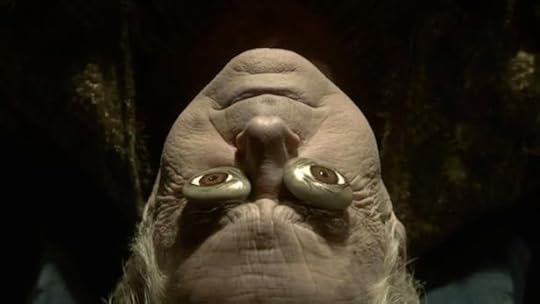
His death led Robert to travel to Winterfell to ask Ned to take on the position, which he only did after Catelyn was lied to by her sister–again on Littlefinger’s orders–that Jon Arryn was killed by the Lannisters. It was also there that Jaime pushed Bran out the window, and while Littlefinger couldn’t have predicted such a glorious/horrific act would occur, he utilized it by lying to Ned and Cat that Tyrion owned the dagger used by the assassin that tried to kill Bran after the fact. That led Catelyn to (quite stupidly) arrest Tyrion, and that set off the war between the two houses.
Until this episode it was always assumed that Cersei had Jon Arryn killed because he discovered Jaime was the father of her children, but here we learn the much more insane truth, that it was Lysa herself that did it, and she did so because she has always been obsessed with Littlefinger.
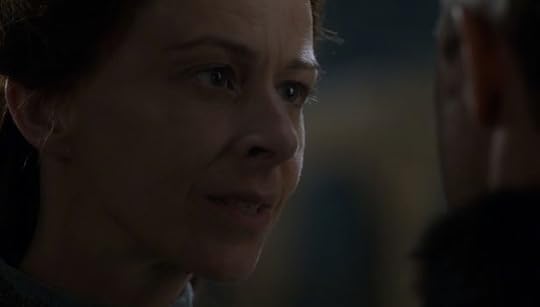
His reasons for killing Jon Arryn are of course ever so different. He doesn’t love Lysa, he views chaos as a ladder of opportunity, and by creating chaos at the highest level it has given him chance after chance to climb higher. Which he has expertly done in the shadows, playing one great house against another, making each think he is an ally, while never letting them realize he is maybe their greatest enemy.
As a result of his scheming he has earned more and more power during these dark days in Westeros, while other, more noble and influential houses have been weakened or destroyed. First he hurt both House Baratheon and House Arryn, which in turn hurt House Stark, who he decimated by getting Joffrey to execute Ned. Then he helped unite the Lannisters and Tullys, which got him named Lord of Harrenhal. That didn’t stop him from conspiring with Olenna Tyrell to murder Joffrey though, creating even more chaos, which he used to steal away Sansa Stark (and potentially the North, where he eventually will betray the Boltons). Also in this episode he marries Lysa, whom he will kill soon giving him de facto control of the Vale.
These wars that he set in motion have seen the end of House Baratheon and House Martell, with House Arryn, House Tyrell, and House Lannister on the verge of extinction themselves (and House Greyjoy isn’t in great shape these days either). It’s amazing House Stark is in as “good” a shape as they are, though Jon’s biggest non-Ice demon threat is currently–you guessed it–Lord Baelish.
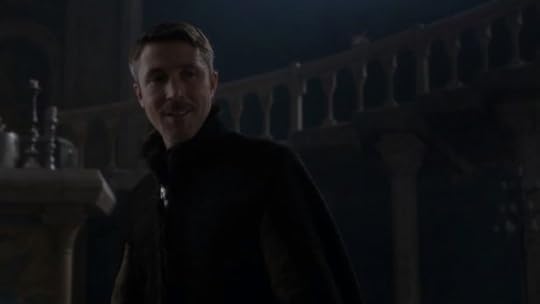
He has been at the center of everything happening in the Seven Kingdoms the whole time, and in the novels this revelation is stunning. George R.R. Martin sets it up perfectly, and when the truth comes out it’s a book-dropping moment. It all makes sense, but we never saw it coming. I remember reading it and swearing out loud.
But somehow on the show it feels like a complete throwaway, understated to the point of feeling unimportant. There are no great musical cues or edits, no interesting shots or framing, it just happens and that’s it. None of the techniques available for telling a story visually are utilized, and it gives the moment an unfathomable air of apathy.
Lysa says to him:
“What wife would do for you the things I’ve done for you? What wife would trust you the way I’ve trusted you? When you gave me those drops and told me to pour them into Jon’s wine, my husband’s wine–when you told me to write a letter to Cat telling her it was the Lannisters–“
It’s as ham fisted as it reads, with the dialogue uncharacteristically not trusting of the viewers. Either drop “Jon” or “my husband.” The moment doesn’t hit, and then it doesn’t get to breathe, with Baelish kissing her to shut her up. His follow up is very good, with him saying, “The deed is done, faded into nothing. Only speaking of it can make it real,” but there’s almost no emotional impact or reward to what has just been revealed. You almost have to ask yourself if you just heard them correctly, because what is said is so much bigger than how it is presented.
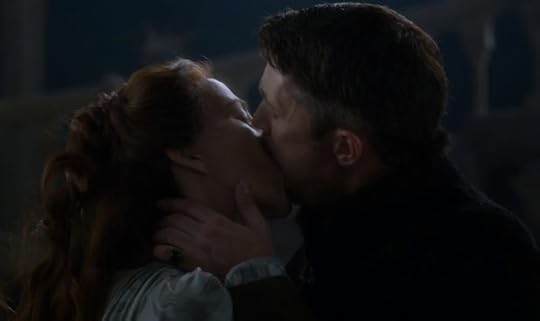
It might have worked as a quiet moment (like Ned’s execution), instead of a big, stunning one, but it’s not even that because it’s rushed. It just happens, like a minor plot point rather than the monster, game-changing one it really is. If you’ve read the books you know how great this moment is there, and it’s hard to not to compare how it was handled on the show.
But we know we really should only judge an adaptation on the merits of its own medium. And in this case, this scene, one of the biggest, most shocking moments in the whole story, was shockingly one of its biggest disappointments. Completely independent of the novels.
But what do you think? Are we being too hard on this scene, or was it well done? Reveal what you think in the comments section below.
Images: HBO
March 2, 2017
BATMAN Reanimated – Mr. Freeze Gives Some ‘Cold Comfort’
Batman: The Animated Series was a renaissance for many of Batman’s cadre of secondary villains, but none more so than Mr. Freeze. He was a laughable, gimmicky bad guy in the comics and effectively silly on the 1966 Batman TV show, even when played by serious actors George Sanders, Otto Preminger, and Eli Wallach. But in the 1992 episode “Heart of Ice,” he became a tragic, richly drawn character and favorite among Bat-fans everywhere. In 1997, Joel Schumacher’s Batman & Robin came out and the character became a joke again, so later that year in The New Batman Adventures, the writers had to go even darker to make up for it.
“Cold Comfort” sets up this next evolution of Mr. Freeze by making him even colder (pun intended) than he was before. While in his initial appearances in TAS, he was a scorned scientist endeavoring to save his terminally ill wife, losing his humanity in the process, this episode finds him in full on “freeze the world” mode. Whatever modicum of reasoning he had seems to have flown out the window. He’s simply cruel and vindictive. But, of course, because this show is incredibly well-written, we find out why, and it makes his sadness and anger all the more understandable, if still unconscionable.
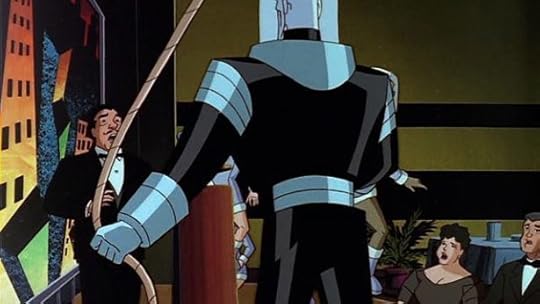
The episode opens at a history museum event where a scientist named Margaret Madsen is unveiling her discovery of a rare dinosaur skeleton, the culmination of her life’s work. Just then, Mr. Freeze and some of his Freeze Ladies break in, wanting neither hostages nor cash and jewels. All Mr. Freeze does is shoot the skeleton with his freeze ray, and destroy it. When asked by a tearful Madsen why he’d done it, Freeze says only “Why not?” A few days later, Bruce Wayne and Commissioner Gordon are at an art gallery, discussing the strange and seemingly unmotivated Mr. Freeze attack, when Mayor Hill has an artist dedicate his new mural “Twilight in Gotham,” to the city. Again, this is the artist’s crowning achievement, and Freeze breaks in to destroy it. He also attempts to freeze a woman’s beloved dog, saying the city should fear for the things they hold dear. Batman arrives to stop the dog murder, but the damage to the painting is done, and Mr. Freeze tosses Batman aside like a rag doll.
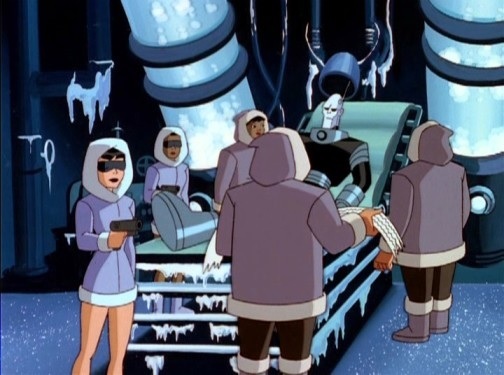
Mr. Freeze has some scientists holed up in a frozen warehouse, forcing them to stabilize his condition. They do this, but the villain refuses to release them. Later, as part of his desire to destroy the beloved things of the city’s wealthiest, Mr. Freeze and his henchladies show up at Wayne Manor, where Freeze debates which of Bruce Wayne’s loved ones he should take, the surrogate son (Tim Drake) or the surrogate father (Alfred), ultimately choosing the latter. Luckily, Batgirl was down in the Batcave training is was able to stop Freeze, but Alfred needed a long soak in a chemical bath to save his life.
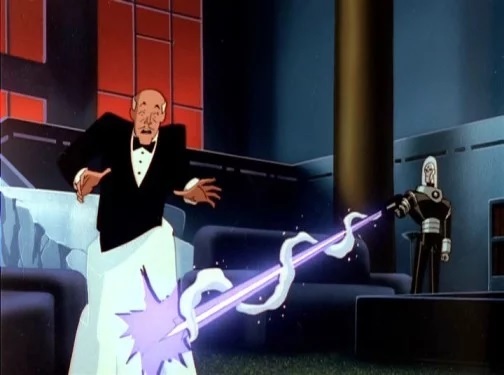
Batgirl and Batman track down Freeze in the warehouse, where Freeze shares with them the sad truth…He had managed to save his beloved wife Nora after all, however his condition slowly eroded his body until he was incurable himself. Going into hiding and driving Nora away, knowing he could never love her as a husband again, she eventually remarried, while Victor had become nothing but a living frozen head. His freeze suit opens up to reveal his head on a set of robotic spider legs, all that is left of the brilliant scientist. He wants to see the world freeze and promises to destroy Gotham with a reverse fusion bomb, which Batman is able to foil in the air before it’s too late.
Mr. Freeze actually only appears in four episodes and a movie in the whole of the Timmverse DC Animated adventures, the aforementioned “Heart of Ice” and “Deep Freeze” in TAS, the spinoff feature film Batman & Mr. Freeze: SubZero, this episode of The New Batman Adventures, and the Batman Beyond episode “Meltdown.” That’s a very small rate of appearance, but that’s because each one is so tied to his tragic story arc and personal loss. He’s not like Joker or Penguin or Poison Ivy who can pop in and out whenever because they’ll never quit being baddies. Mr. Freeze is entirely about trying to save his wife, at the loss of his own humanity in the process.
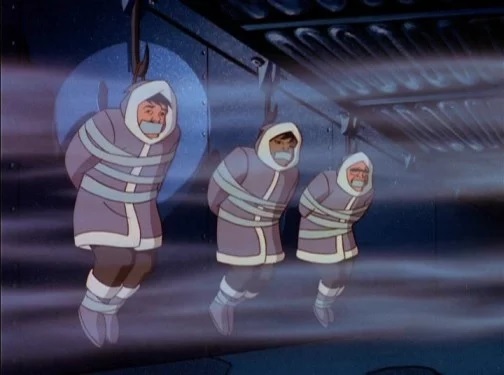
This episode also touches nicely on the burgeoning Bat-Family I talked about last week in “Sins of the Father.” Here we see Bruce training Barbara/Batgirl, and both being supportive but a difficult taskmaster, turning up the difficulty on a laser training device even after she got zapped on a lower setting. This leads almost immediately to Mr. Freeze nodding to the fact that Bruce Wayne has surrogate family members around him, and he sees Tim as his son and Alfred as his father. It’s a pretty functionally dysfunctional family at the best of times, and it took Freeze threatening to take a member of it to shake Bruce out of complacency a little bit.
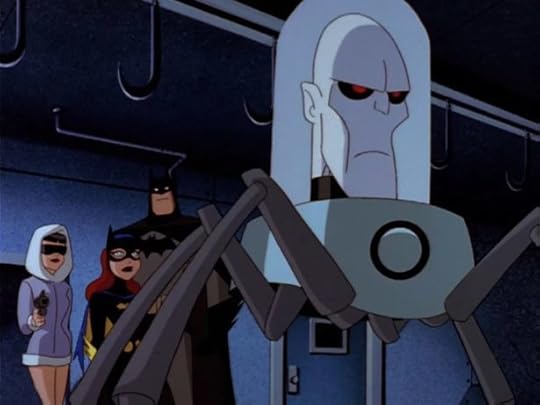
And, just for funsies, let’s talk about Mr. Freeze’s redesign. This might be the only design change that makes sense from a narrative standpoint. His face is far more gaunt and angular, and his eyes are way sunken in… cuz he’s effectively dead, yo! His suit looks way different and bulkier, but that’s because it’s a robotic body that has to house a set of retractable spider legs attached to his head. I don’t think he looks as awesome in this version, but he does look scarier, and that’s perfectly in line with what he is in this episode. So I fully stand by this one, really.
Speaking of redesigns I can get behind, next week we’ll talk about “Never Fear,” which shows us the brand brand new version of the Scarecrow, and damned if he doesn’t look even more nightmarish than before. In the meantime, share your opinion on “Cold Comfort” in the comments below!
Images: WB Animation
Kyle Anderson is the Associate Editor for Nerdist. He’s written the animation retrospectives Batman: Reanimated, X-Men: Reanimated, Cowboy Rebop, and Samurai reJacked. Follow him on Twitter!
Chris Hardwick's Blog
- Chris Hardwick's profile
- 132 followers


